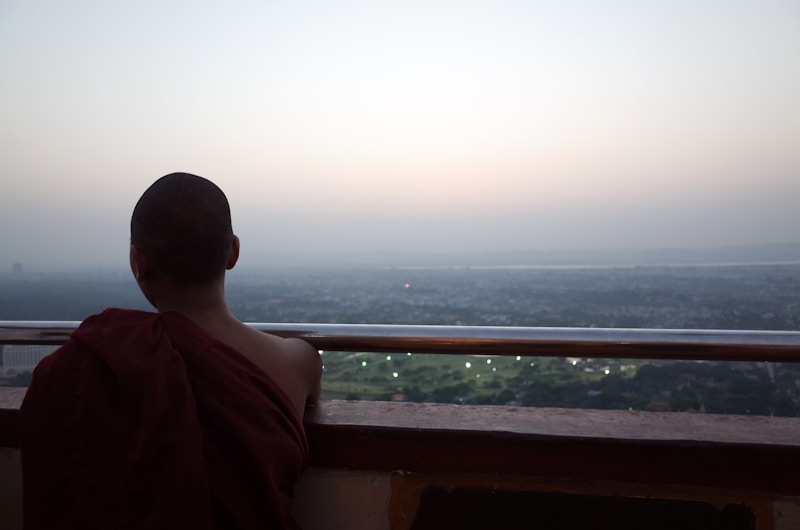Podcast
Questions and Answers
Why did the Buddha choose Kusinara as the place for his demise?
Why did the Buddha choose Kusinara as the place for his demise?
The Buddha chose Kusinara because it was a lively city suitable for his final passing, once known as Kusavati and steeped in history.
What did Ananda suggest to the Buddha regarding his death location?
What did Ananda suggest to the Buddha regarding his death location?
Ananda suggested that the Buddha not die in Kusinara and instead proposed greater cities like Champa or Rajagaha.
What is parinibbāna in relation to the Buddha?
What is parinibbāna in relation to the Buddha?
Parinibbāna refers to the Buddha's death and the ultimate state of enlightenment he achieved at that time.
What scholarly debate is mentioned regarding the Buddha's death?
What scholarly debate is mentioned regarding the Buddha's death?
Signup and view all the answers
What is the 'uncorrected long chronology' related to the Buddha's death?
What is the 'uncorrected long chronology' related to the Buddha's death?
Signup and view all the answers
What term is used to designate non-monarchical political formations in early Indian history?
What term is used to designate non-monarchical political formations in early Indian history?
Signup and view all the answers
Between which centuries BCE are the first four books of the Sutta Pitaka generally dated?
Between which centuries BCE are the first four books of the Sutta Pitaka generally dated?
Signup and view all the answers
What resource was significant in the emergence and maintenance of power in early Indian societies?
What resource was significant in the emergence and maintenance of power in early Indian societies?
Signup and view all the answers
What are the three classifications of religious texts in ancient India?
What are the three classifications of religious texts in ancient India?
Signup and view all the answers
What does the term 'Jatakas' generally refer to in the context of the Pali canon?
What does the term 'Jatakas' generally refer to in the context of the Pali canon?
Signup and view all the answers
What is the time frame suggested by the Short Chronology for the Buddha's parinirvana?
What is the time frame suggested by the Short Chronology for the Buddha's parinirvana?
Signup and view all the answers
According to the Pali chronicles, when did the parinirvana occur?
According to the Pali chronicles, when did the parinirvana occur?
Signup and view all the answers
What does A.K. Narain suggest concerning the date of the Buddha's parinirvana?
What does A.K. Narain suggest concerning the date of the Buddha's parinirvana?
Signup and view all the answers
What range of years does radiocarbon dating provide regarding the date of the Buddha?
What range of years does radiocarbon dating provide regarding the date of the Buddha?
Signup and view all the answers
What significant evidence was found in the Lumbini excavations?
What significant evidence was found in the Lumbini excavations?
Signup and view all the answers
What are the diagnostic features of the early historic period in North India?
What are the diagnostic features of the early historic period in North India?
Signup and view all the answers
When did the early historic phase begin in North India?
When did the early historic phase begin in North India?
Signup and view all the answers
What evidence challenges the understanding of the transition to the early historic period in South India?
What evidence challenges the understanding of the transition to the early historic period in South India?
Signup and view all the answers
When did the transition to the historic period occur in Northeast India?
When did the transition to the historic period occur in Northeast India?
Signup and view all the answers
Why is it important to reassess details regarding the early historic period?
Why is it important to reassess details regarding the early historic period?
Signup and view all the answers
Study Notes
The Buddha's Demise
- The Buddha died in Kushinara
- Kushinara was a prosperous city
- The disciples pleaded with the Buddha to not die in a small town
- The Buddha instructed his disciple, Ananda, to treat his remains in the same manner as those of a king of kings
- A great debate about the date of the Buddha's parinirvana
Early Indian History
- Discussions of early Indian history are often framed within an evolutionary scheme of a transition from tribe to territorial state
- The terms "tribe" and "state" are difficult to define in universal terms
- The relationship between tribe and state has often been seen in terms of an evolution
- Tribal chieftains sometimes acquired kingdoms, others resisted
- The emergence of agrarian states, cities, and writing are important developments.
- Hunting, gathering, and pastoralism did not fade away with the advent of agriculture
- Forest tribes were an important part of the political map
- The presence and importance of these groups were largely inferred due to the lack of direct sources.
Dating the Buddha's Parinirvana
- The date of the Buddha's parinirvana (death) is under debate
- There are varying opinions and numerous dates suggested
- Dates are difficult to fix definitively because of different chronologies used in different texts
- Many scholars still support a date around 480 BCE, but other proposed dates are available in Pali chronicles, including 368 BCE or 383 BCE
Studying That Suits You
Use AI to generate personalized quizzes and flashcards to suit your learning preferences.
Description
Explore the significant events surrounding the Buddha's death in Kushinara and the implications on early Indian civilization. Delve into the transition from tribal structures to territorial states, and understand the complexities of these historical frameworks. This quiz will challenge your knowledge on both subjects.





